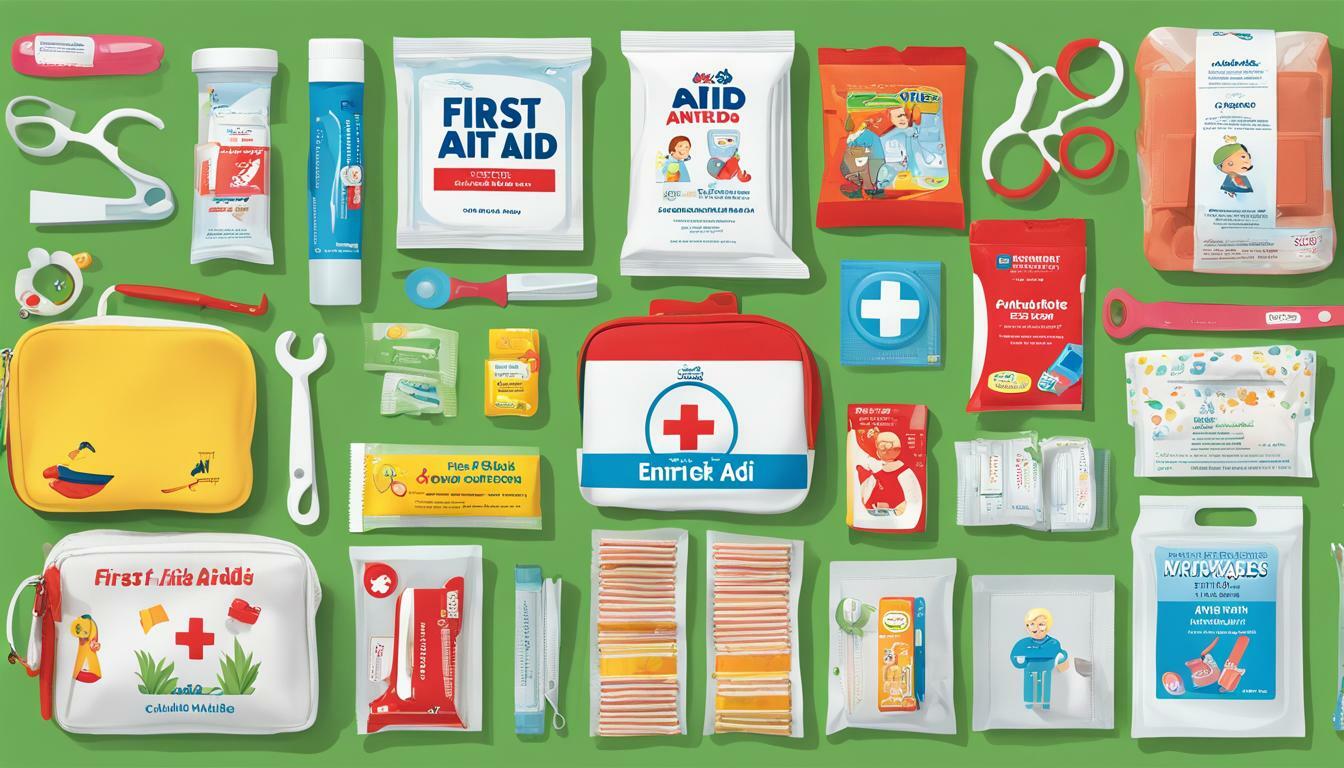When it comes to child-friendly spaces, having the right first aid kit can make all the difference. Children have unique needs when it comes to first aid, and it is essential to ensure that your first aid kit is tailored to meet these needs. In this section, we will explore the special considerations that need to be taken into account when creating first aid kits for child-friendly spaces. We will cover everything from essential supplies to additional safety measures, and how to customize your first aid kit to specific environments.
First aid supplies for children should not only be effective but also safe. Child-friendly first aid kits should be easily accessible and use child-proof containers to prevent accidental ingestion of harmful substances. It’s important to ensure that the first aid kit itself is designed with the safety of children in mind, as well as the supplies inside.
Child-friendly first aid kits should contain supplies specifically designed for children, including child-specific bandages and antiseptic wipes. In addition to these essential supplies, child-safe first aid kits should also include additional safety measures, such as child-sized gloves and safety scissors.
By taking these special considerations into account, you can create a first aid kit that is both effective and tailored to the needs of children. Read on to discover more about the essential supplies and additional safety measures that should be included in child-friendly first aid kits.
Key Takeaways
- First aid kits designed for child-friendly spaces should be tailored to the unique needs of children.
- Child-friendly first aid kits should be easily accessible and use child-proof containers to prevent accidental ingestion of harmful substances.
- Essential supplies for child-friendly first aid kits include child-specific bandages and antiseptic wipes, as well as additional safety measures such as child-sized gloves and safety scissors.
Understanding the Unique Needs of Children
When it comes to first aid, children have unique requirements that need to be taken into account. Child-specific first aid supplies and pediatric first aid kits are essential for ensuring that children receive the appropriate care in case of an emergency.
One of the most critical factors to consider is size. Bandages and other supplies must be the appropriate size for children, or they will not be effective. For instance, using adult-sized bandages on a small child’s wound may lead to complications, such as irritation or infection.
Age is another consideration. Certain injuries are more prevalent in children, such as cuts and bruises from falls. As children grow and develop, so do their risks and needs. It’s essential to understand common injuries associated with different age groups to ensure that first aid kits are tailored to meet those needs.
Pediatric first aid kits should include supplies that are child-friendly and easy to use. For instance, child-sized gloves and safety scissors can make it easier to administer care quickly and effectively. These specialized supplies also help ensure that children feel safe and comfortable during the emergency.
It’s important to note that pediatric first aid kits should not replace emergency medical care. In case of a severe injury or life-threatening emergency, professional medical attention should be sought immediately.

Essential First Aid Supplies for Child-Friendly Spaces
A well-stocked first aid kit is crucial for any child-friendly space. It can provide immediate care for minor injuries and potentially save a child’s life in an emergency. When creating a child-friendly first aid kit, it’s important to include the essential supplies that can address common injuries and illnesses. Here’s a list of the must-have items for your child-friendly first aid kit:
| Item | Description |
|---|---|
| Bandages | Assortment of adhesive bandages in various sizes and shapes to cover cuts, scrapes, and blisters. |
| Antiseptic wipes | To clean and disinfect wounds, preventing infections. |
| Adhesive tape | To secure bandages and dressings in place. |
| Gauze pads | To control bleeding and protect large wounds. |
| Instant cold pack | To reduce swelling and pain caused by injuries. |
| Tweezers | To remove splinters, debris, or ticks from the skin. |
| Scissors | To cut tape, gauze, or clothing in case of an emergency. |
| Gloves | Disposable gloves, non-latex, to protect against bloodborne pathogens and other bodily fluids. Child-sized gloves are recommended for smaller hands. |
It’s important to regularly check and replenish your child-friendly first aid kit to ensure that all supplies are up-to-date and in good condition. Expired items should be discarded safely and replaced with new ones. A well-maintained first aid kit can make all the difference in an emergency.
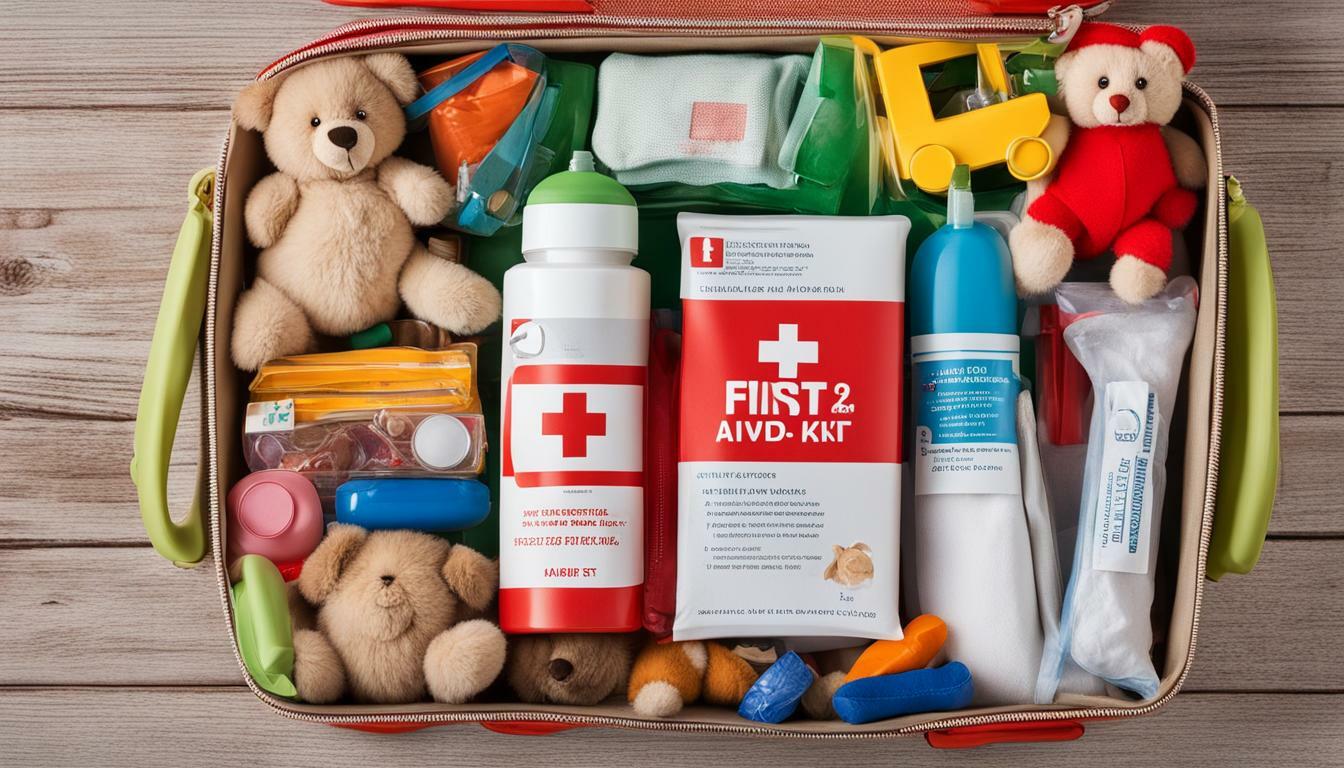
Remember, a safe and well-equipped child-friendly space should always have a first aid kit on-hand. By including these essential supplies, you can provide immediate care and comfort to children in need. Stay prepared, stay safe!
Additional Safety Measures for Child-Friendly First Aid Kits
When designing a first aid kit for child-friendly spaces, it’s crucial to incorporate additional safety measures to ensure that the kit is safe and easy to use for both children and adults. Safety-approved and child-safe first aid kits will provide peace of mind and ensure quick and effective response in case of emergencies.
One important consideration is to use child-proof containers to store medication and small supplies. This will prevent accidental ingestion or harm to children. Child-sized gloves and safety scissors are also essential to ensure that the kit is user-friendly for children. Having calming items such as toys or stickers can also distract and comfort children during a traumatic incident.
It’s important to include detailed instructions and labels that are easy to read and understand, even for those who may not speak the same language. Using illustrations and visual aids can also enhance the usability of the first aid kit for children who may not be able to read.
| Additional Safety Measures for Child-Friendly First Aid Kits: |
|---|
| Use child-proof containers to store medication and small supplies |
| Include child-sized gloves and safety scissors |
| Add calming items such as toys or stickers |
| Ensure labels and instructions are easy to read and understand, using illustrations and visual aids where necessary |
By incorporating these additional safety measures, you can provide child-safe and safety-approved first aid kits that prioritize the well-being of children. These measures will enhance the safety and effectiveness of the first aid kit in child-friendly spaces, ensuring that they are always prepared for any emergency.

Considerations for First Aid Kits in Schools
Schools are one of the most important child-friendly spaces that require comprehensive first aid kits. When assembling these kits, it’s essential to consider the unique needs of school environments. In addition to the essential supplies for children, such as bandages and antiseptic wipes, there are specific items that should be included in first aid kits for schools.
One important consideration is the inclusion of emergency contact information. It’s essential to have a list of emergency contacts readily available in case of an emergency. This list should include phone numbers for parents, guardians, and emergency services. Additionally, it’s important to have protocols in place for administering medication to children with specific health conditions.
Another consideration is the specific supplies needed for playground injuries. Children are at greater risk of injury while playing outside, making it essential to have supplies such as ice packs and splints available in first aid kits. Injuries such as cuts and scrapes are also common on playgrounds, making it important to include tweezers and adhesive tape in the kit.
It’s important to ensure that the first aid kit is accessible to all staff members and students. Therefore, the kit should be stored in a central location, easily accessible in the event of an emergency. Additionally, signage reminding staff and students of the location of the first aid kit can be helpful.
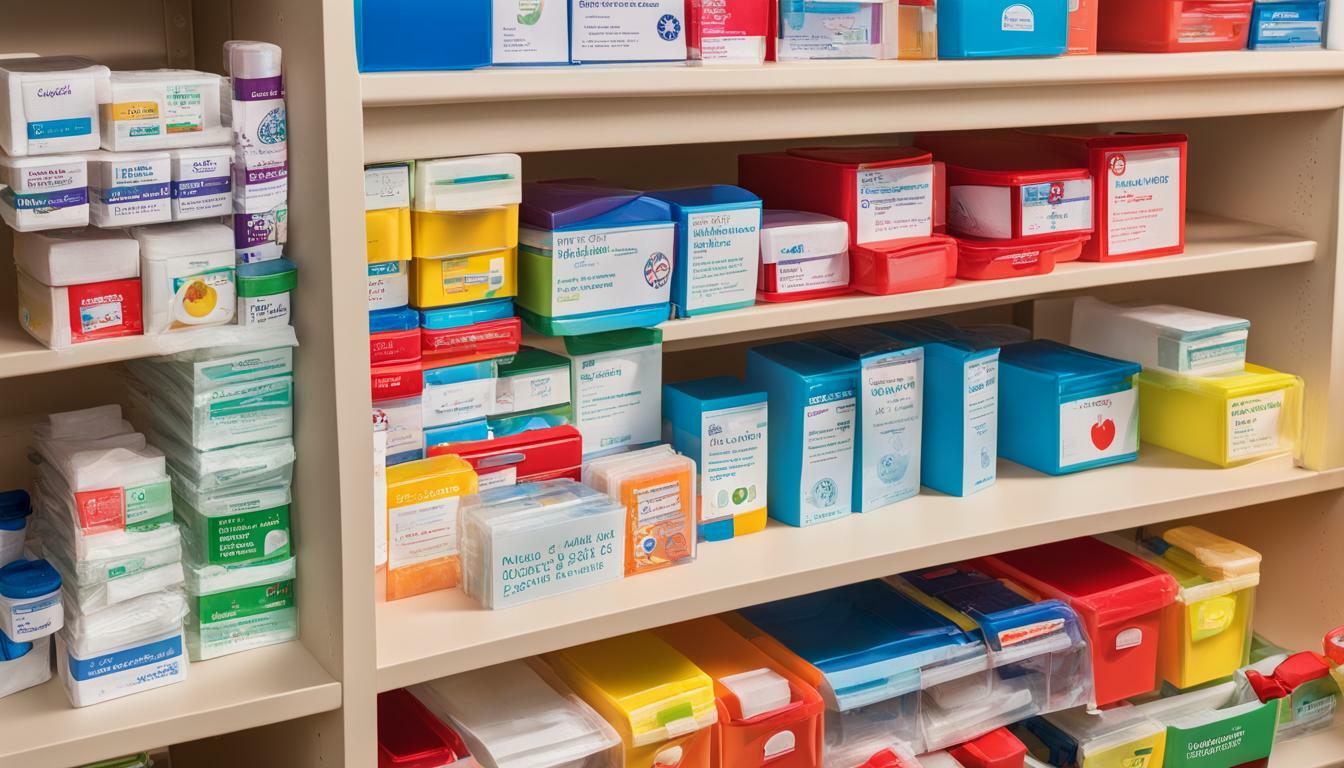
By taking into account the specific needs of schools, we can create effective first aid kits that prioritize the safety and well-being of students and staff.
Ensuring Accessibility in Child-Friendly First Aid Kits
Accessibility is crucial when it comes to child-friendly first aid kits. Clear labeling, easy-to-understand instructions, and visual aids are integral to ensuring that children and adults can use the kit easily. This is especially important for children who may not be able to read yet. Using illustrations and age-appropriate information can greatly enhance the usability of the first aid kit.
Child-friendly first aid kits should be designed with safety in mind. They should contain child-proof containers to prevent accidental exposure to medication or other hazardous items. Additionally, child-sized gloves and safety scissors should be included for use on minor injuries.
It’s important to ensure that the first aid kit is easily accessible, but also stored out of reach of children. Placing the kit somewhere visible, but not easily reachable by children, helps to balance accessibility and safety.
Using high-contrast colors and clear fonts on the packaging and instruction manual can also improve the accessibility of the kit. This ensures that the information is easily visible and legible in different lighting conditions.
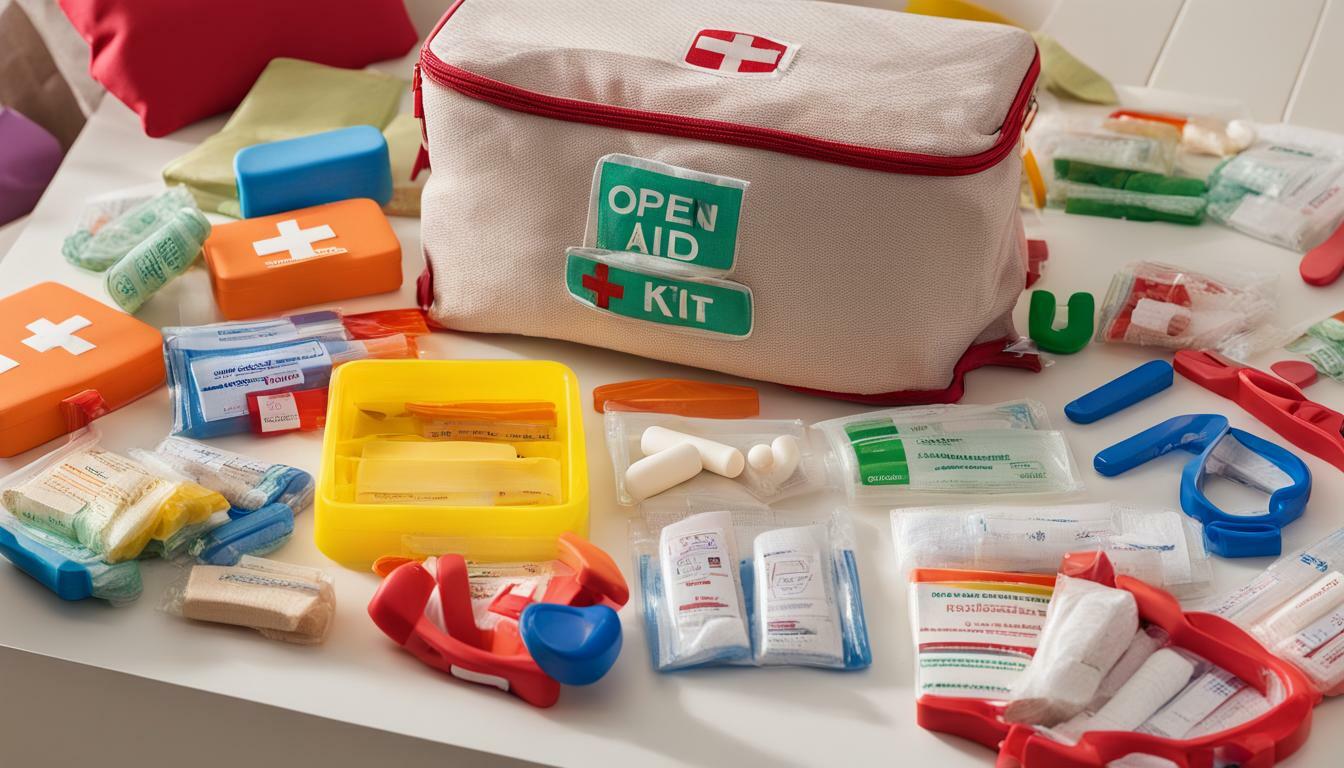
By considering accessibility when creating child-friendly first aid kits, we can make sure that they can be easily used by children and adults in case of emergencies. This allows for quick and efficient response to injuries and provides peace of mind to those responsible for the safety and well-being of children.
Regular Inspection and Maintenance of Child-Friendly First Aid Kits
Regular inspection and maintenance of child-friendly first aid kits are crucial for ensuring their effectiveness and availability in case of emergencies. It’s important to check the supplies in the kit regularly to ensure they’re not expired or damaged and to replenish them when necessary.
Experts recommend checking the first aid kit’s contents at least once a month and replacing any items that have expired, such as medications, ointments, and creams, which can lose their effectiveness over time. Any damaged or dirty supplies should also be replaced immediately.
In addition to checking the supplies, it’s essential to ensure the first aid kit is easily accessible and visible to all adults in the child-friendly space. It should be stored in a secure location, but one that is easily accessible in an emergency.
One way to ensure the first aid kit remains accessible is to create a checklist of the supplies it should contain, along with their expiration dates. This will help you keep track of what needs to be replaced and when, ensuring that the first aid kit is always fully stocked and ready for use.
Lastly, it’s important to ensure that all adults responsible for the safety of children in the child-friendly space are trained in basic first aid. By educating staff and caregivers on how to use the first aid kit and the supplies in it, you can increase the chances of a successful outcome in case of an emergency.
Regular inspection and maintenance of child-friendly first aid kits can help keep children safe and provide peace of mind to those responsible for their well-being. By ensuring that the kit is always up-to-date and well-stocked, you can respond quickly and effectively to any accidents or injuries that may occur.
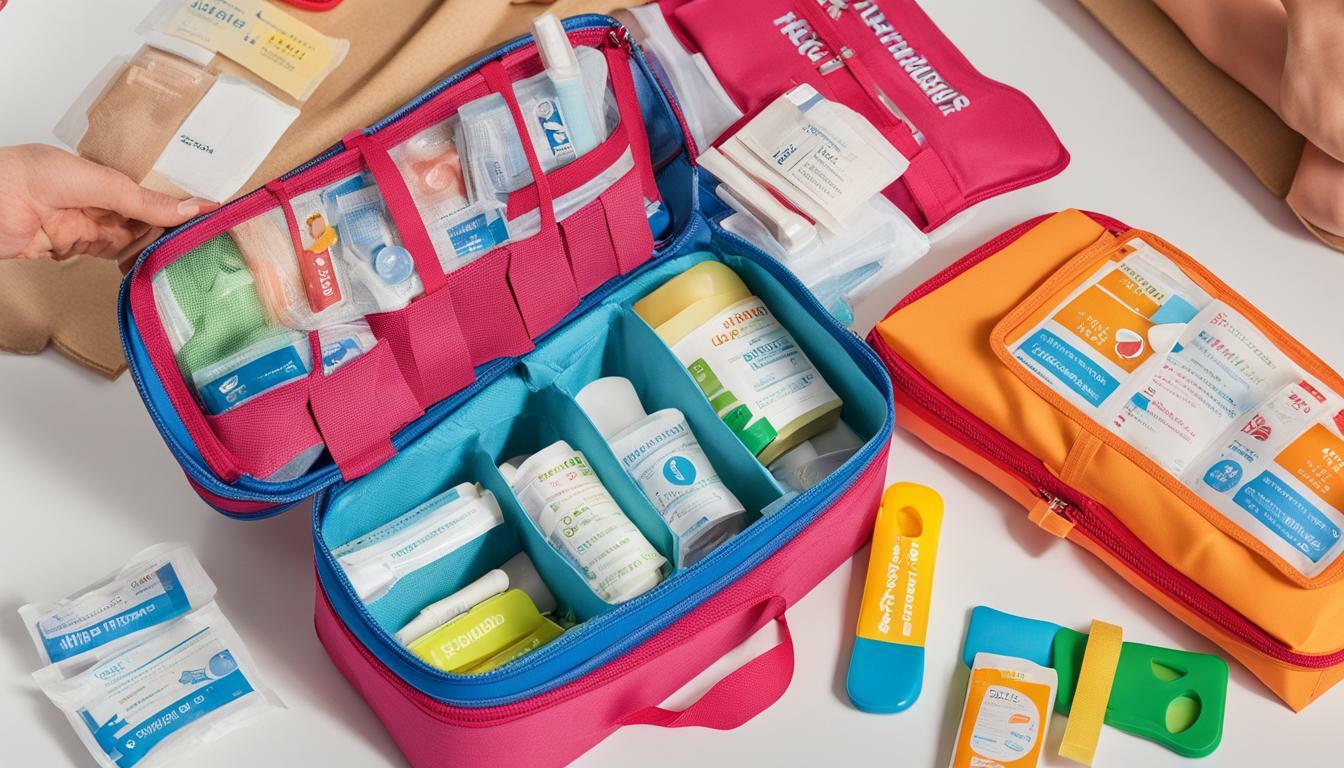
Training and Education for First Aid in Child-Friendly Spaces
Creating a child-friendly first aid kit is only the first step in ensuring the safety of children in these spaces. It’s important that adults who are responsible for children are trained in basic first aid techniques and understand the contents of the first aid kit.
First aid training can empower caregivers and staff to respond effectively to emergencies and provide critical care while waiting for medical professionals to arrive. Basic first aid courses cover topics such as wound care, bleeding control, and CPR, and can be tailored to address the unique needs of children.
When choosing a first aid training program for child-friendly spaces, look for courses that are specifically designed for this purpose and taught by experienced instructors. It’s also important to ensure that the training is up-to-date and in line with the latest standards and guidelines.
Some first aid training programs may also offer specialized modules for particular environments such as schools, playgrounds, or childcare centers, which provide tailored guidance for responding to common injuries in those settings.
By investing in first aid training and education, we can create a safer environment for children in child-friendly spaces and confidently respond to emergencies should they arise.
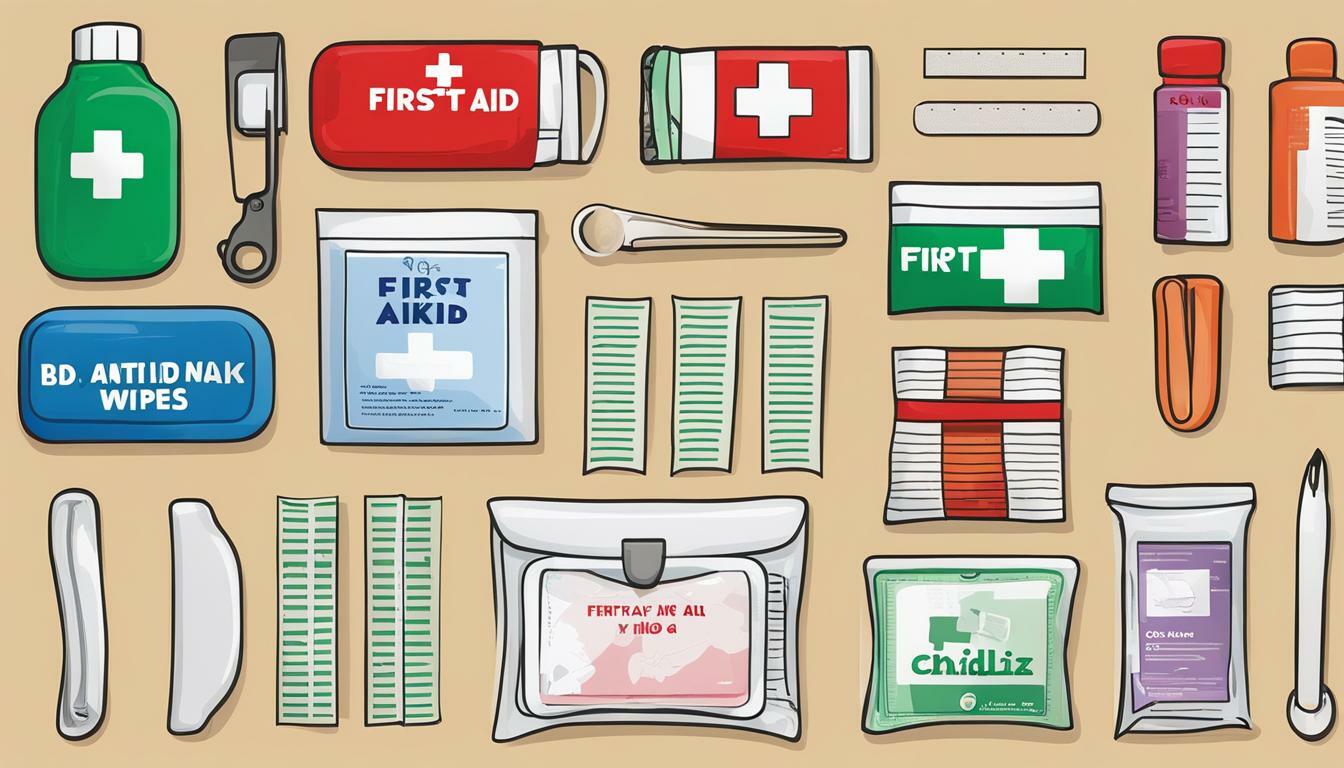
Customizing First Aid Kits for Specific Child-Friendly Environments
Child-friendly spaces come in all shapes and sizes, and each environment poses unique risks and challenges for children. Customizing first aid kits to meet the specific needs of different spaces is crucial for providing effective care in case of an emergency.
For playgrounds and outdoor spaces, consider including items such as instant cold packs for bumps and bruises, insect sting relief wipes, and sunscreen to protect children from harmful UV rays. For schools, make sure to include emergency contact information for students, teachers, and parents, as well as a CPR face shield for trained staff.
Childcare centers may require additional supplies such as disposable thermometers for taking temperature readings and child-friendly fever reducers. For swimming pools, waterproof bandages and a rescue tube can be essential additions to a first aid kit.
Remember to tailor the first aid kit to the age range of the children using the space. For infants and toddlers, add items such as teething gel and baby-safe nail clippers. For older children, consider adding a digital thermometer and a first aid manual for reference.
By customizing first aid kits for specific child-friendly environments, you can address the unique needs and risks of each space and ensure that children receive the best possible care in case of an emergency.
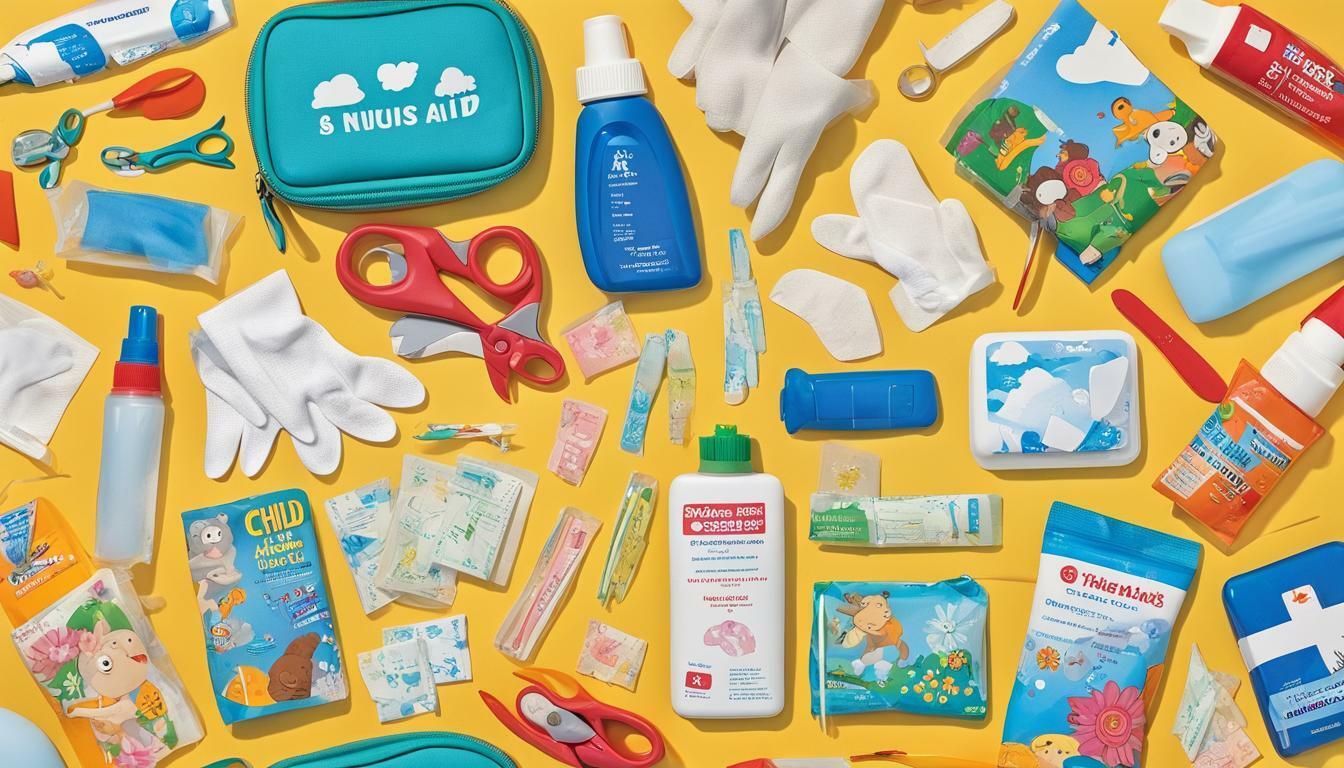
Resources for Child-Friendly First Aid Kits
When it comes to preparing child-friendly first aid kits, it can be challenging to find supplies that are specifically designed for children. However, there are numerous resources available that offer safety-approved first aid supplies, tailored to the unique needs of children in different environments. Here are some reliable sources to consider:
- St John Ambulance: This UK-based charity offers a wide range of first aid supplies suitable for children. You can find everything from basic first aid kits to more advanced medical equipment, such as defibrillators. They also provide first aid training courses for both individuals and businesses.
- Red Cross Shop: The British Red Cross offers an online shop with a variety of child-friendly first aid supplies, including bandages, antiseptic wipes, and plasters. They also provide free first aid app, which features step-by-step advice on different first aid scenarios.
- Pharmacies and Supermarkets: Many pharmacies and supermarkets stock child-friendly first aid supplies, such as pain relief medication for children and child-sized bandages. Look for products with clear packaging and instructions that are easy to follow.
- Amazon: The online retailer offers a wide range of child-friendly first aid supplies from various reputable brands. Be sure to check customer reviews to ensure you are purchasing quality products that meet your specific needs.
- Specialist Vendors: There are also several specialist vendors that cater to specific child-friendly environments, such as schools and nurseries. These vendors offer comprehensive first aid kits that are tailored to the risks and challenges of these environments. Look for vendors that are safety-approved and have good customer reviews.
By sourcing first aid supplies from these reliable resources, you can ensure that your child-friendly first aid kits are properly equipped to provide immediate care when necessary. Remember to regularly check and replenish your first aid supplies, and discard any expired items, to ensure your kit is always ready for use.

Conclusion
Child-friendly spaces require special considerations when it comes to first aid kits. It is crucial to account for their unique needs and requirements, such as child-specific supplies, additional safety measures, and clear accessibility. Regular inspection and maintenance of first aid kits, along with proper staff training, enhance the preparedness and effectiveness of child-friendly spaces in addressing emergencies. Customizing first aid kits for specific environments can further optimize their utility and suitability.
Effective Child-Friendly First Aid Kits
Effective child-friendly first aid kits include essential supplies like bandages, antiseptic wipes, and adhesive tape. Additional safety measures, such as child-proof containers and safety scissors, ensure the kits themselves are safe and easy to use. Providing emergency contact information, medication protocols, and specific supplies for playground injuries are crucial considerations for first aid kits in schools. Clear labeling, easy-to-understand instructions, and visual aids can enhance the usability of the first aid kit, especially for children who may not be able to read. By procuring reliable resources that supply safety-approved first aid supplies designed specifically for children, child-friendly spaces can ensure they are always well-equipped for emergencies.
With a well-designed and equipped first aid kit, you can provide immediate care and peace of mind to children and those responsible for their well-being. By prioritizing the safety and well-being of children in child-friendly spaces, we can create a more secure and nurturing environment for our future generations.
